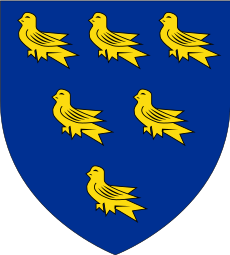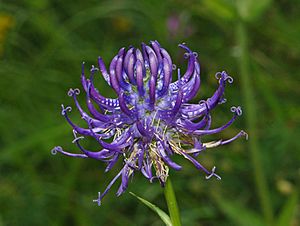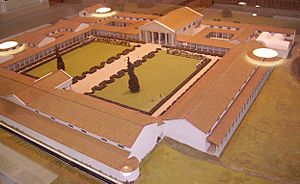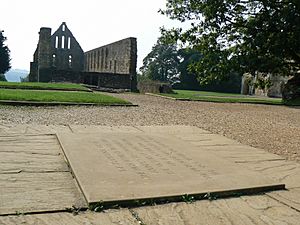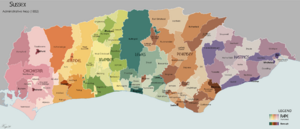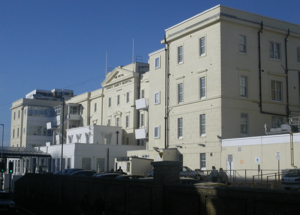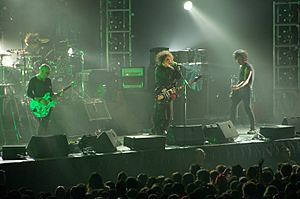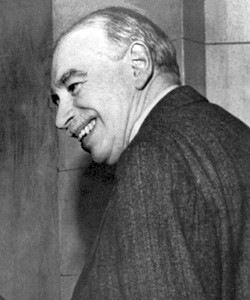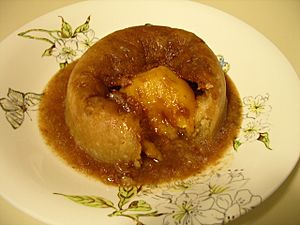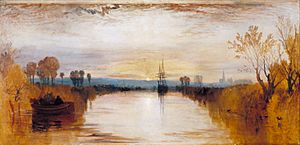Sussex facts for kids
| Sussex | |
| Motto: '"We wunt be druv"' | |
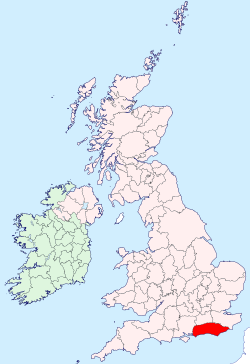 |
|
| Geography | |
| Status |
|
| 1901 area | 1,456.89 square miles (3,773 km2) |
| 2021 area | 1,460.78 square miles (3,783 km2) |
| HQ | Chichester or Lewes |
| Chapman code | SSX |
| History | |
| Origin | Sub-Roman Britain |
| Created | 5th century (traditionally 477) |
| Succeeded by | East Sussex and West Sussex |
Quick facts for kids Demography |
|
|---|---|
| 1901 population - 1901 density |
602,255 413.384 inhabitants per square mile (159.608/km2) |
| 2021 population - 2021 density |
1,705,622 1,167.6 inhabitants per square mile (450.8/km2) |
| Subdivisions | |
| Type | Rapes (historic subdivisions) |
 |
|
| Units |
|
Sussex is a historic county in South East England. It borders Hampshire to the west, Surrey to the north, and Kent to the northeast. To the south, it meets the English Channel. Today, Sussex is split into two main areas: West Sussex and East Sussex.
The area of Sussex has a very long history. Early humans lived here 500,000 years ago! A kingdom called Sussex started in the 5th century. It became part of the Kingdom of England around 860 AD. In 1974, Sussex was officially divided into East and West Sussex for local government.
Even though it's divided, Sussex is still seen as one special place with its own culture. It has its own police force and a special day, Sussex Day, to celebrate its history. In 2011, the flag of Sussex was officially recognized.
Brighton and Hove is the biggest city in Sussex. Other large towns include Crawley, Worthing, and Eastbourne. Sussex has three main natural areas: a flat coastal plain, the rolling South Downs hills, and the wooded Weald.
Sussex played a big part in the Roman conquest of Britain and the Norman conquest of England. In 1066, William the Conqueror landed in Pevensey before the famous Battle of Hastings.
Contents
What's in a Name?
The name "Sussex" comes from old English words meaning "land of the South Saxons." The Saxons were a Germanic tribe who settled here in the 5th and 6th centuries. Other places like Essex and Middlesex also get their names from Saxon tribes.
The earliest time the name "South Saxons" was written down was in 689 AD. Three counties in the United States are also named after Sussex: in Delaware, New Jersey, and Virginia.
Symbols of Sussex
The flag of Sussex is blue with six gold birds called martlets. These birds are like swallows. The flag was officially recognized in 2011. This design comes from the old coat of arms of Sussex. It was first used to represent Sussex in 1611 by a mapmaker named John Speed. The six martlets are now thought to represent the six historic areas of Sussex, called rapes.
Sussex by the Sea is the unofficial song of Sussex. It was written in 1907. This song is sung at celebrations and sports matches across the county.
Sussex Day is celebrated every year on June 16th. This day honors St Richard of Chichester, who is the patron saint of Sussex.
Sussex's motto is We wunt be druv. This old Sussex saying means "we will not be pushed around." It shows how independent the people of Sussex are. The Round-headed Rampion, also known as the "Pride of Sussex," is the county's official flower.
Sussex Landscape and Climate
Natural Beauty
Sussex's landscape is shaped by its geology. The main features are the Weald and the South Downs hills. The highest point in Sussex is Blackdown, which is 280 meters (919 feet) high. Ditchling Beacon is the highest point in East Sussex.
The longest river in Sussex is the River Arun, which is 60 kilometers (37 miles) long. The biggest lakes are man-made reservoirs, like Bewl Water and Ardingly Reservoir.
Weather in Sussex
The coastal areas of Sussex are some of the sunniest places in the UK. They get about 1,900 hours of sunshine each year. This is much more than the UK average.
Rainfall in Sussex is generally lower than the UK average. The South Downs get the most rain. Because Sussex is close to Europe, it can have cold winters and hot, humid summers. The sea makes the coastal areas cooler in summer and sometimes warmer in autumn.
Cities and Towns
Most people in Sussex live along the English Channel coast. The biggest urban area is the Brighton/Worthing/Littlehampton area. It has over 470,000 people, which is almost one-third of Sussex's population.
Here are the five largest urban areas in Sussex:
| Rank | Urban area | Population | Towns and Villages | ||
|---|---|---|---|---|---|
| 2001 | 2011 | ||||
| 1 | Brighton/Worthing/Littlehampton | 461,181 | 474,485 | 10 | This area includes Brighton and Worthing. |
| 2 | Crawley | 180,177 | 180,508 | 6 | This area includes parts of Surrey. |
| 3 | Hastings/Bexhill | 126,386 | 133,422 | 2 | |
| 4 | Eastbourne | 106,562 | 118,219 | 1 | |
| 5 | Bognor Regis | 62,141 | 63,885 | 1 | |
People of Sussex
In 2021, the total population of Sussex was about 1.7 million people. The population density was 451 people per square kilometer. This is a bit higher than the average for England.
In 681 AD, it was thought that Sussex had enough land for 7,000 families. By 1801, the population was 159,311. The population grew to 605,202 by 1901.
History of Sussex
Ancient Times
The area of Sussex has some of the oldest human remains in Europe. These remains, found at Boxgrove, are about 500,000 years old! Tools found near Pulborough are from around 35,000 years ago. These tools might have been used by early modern humans or the last Neanderthals.
Around 6000 BC, the English Channel formed, separating the people of Sussex from Europe. Later, in the Stone Age, the South Downs became a major center for mining flint. Flint tools from Cissbury Ring have been found as far away as the Mediterranean Sea.
Sussex has many remains from the Bronze and Iron Ages, including burial mounds called the Devil's Jumps and Cissbury Ring, a large hillfort.
Roman Sussex
Many experts believe the Roman conquest of Britain in 43 AD started near Fishbourne and Chichester. The Romans built amazing places like the Fishbourne Roman Palace, which is the largest Roman house known north of the Alps. They also built villas, like the well-preserved one at Bignor. Christianity first came to Sussex during Roman times, but it faded when the Romans left in the 5th century.
The Kingdom of Sussex
The story of Sussex's beginning says that in 477 AD, a leader named Ælle landed with his three sons. He was recognized as the first "Bretwalda," or overlord, of southern Britain.
By the 7th century, South Saxon kings ruled from areas around Selsey and Chichester. For a long time, Sussex faced attacks from the kingdom of Wessex. Sussex became Christian with the help of St Wilfrid, making it the last major Anglo-Saxon kingdom to adopt Christianity. Sussex was eventually taken over by Wessex around 827 AD. Wessex later grew into the Kingdom of England.
Norman Conquest
Sussex was the site of the famous Battle of Hastings in 1066. This battle led to the Norman conquest of England. William of Normandy landed at Pevensey and built a castle at Hastings. The battle was fought between William and the English king, Harold Godwinson. Harold's army was defeated, and he was killed.
After the Normans won, they destroyed many areas in Sussex to stop rebellions. This caused a big drop in wealth for the county. Sussex became very important during the Norman period because it was on the main route between England and Normandy. The Normans also built many castles, like those at Arundel, Bramber, Lewes, Pevensey, and Hastings. They moved the main church of Sussex from Selsey to Chichester and founded new towns.
Medieval Times
In 1264, the Battle of Lewes was fought in Sussex. During this battle, Simon de Montfort and other barons captured Prince Edward, who later became King Edward I.
During the Hundred Years' War, Sussex was on the front line. Towns like Hastings, Rye, and Winchelsea were burned. Many people in Sussex also took part in the Peasants' Revolt of 1381, asking for fairer treatment.
Early Modern Sussex
The Wealden iron industry grew very quickly in Sussex, especially after 1496. Skilled workers from Europe came to Sussex, bringing new techniques. This industry was very important for the country.
When Henry VIII separated the Church of England from Rome, many monasteries in Sussex, like Lewes Priory and Battle Abbey, were destroyed. During the English Civil War, Sussex was important because of its iron industry. King Charles II even escaped to France through Shoreham after a battle in 1651.
In 1681, William Penn was given land in North America. About 200 people from Sussex, mostly Quakers, went there to live. They founded towns named after places in Sussex, like Lewes and Seaford in Delaware.
In the late 1700s, sea bathing became popular for health. This led to the growth of seaside resorts like Brighton, Hastings, Worthing, and Bognor.
Recent History
In the early 1800s, farm workers in Sussex faced very tough times. This led to riots, known as the Swing Riots, which lasted for several weeks.
During World War I, on June 30, 1916, many soldiers from the Royal Sussex Regiment were killed in the Battle of the Boar's Head. This day became known as The Day Sussex Died. In World War II, Sussex was on the front line. Its airfields were key in the Battle of Britain, and its towns were often bombed.
After the war, Crawley was made a "new town." In 1974, East and West Sussex became separate ceremonial counties.
How Sussex is Governed
Politics
Sussex sends 16 Members of Parliament (MPs) to the UK Parliament. For a long time, Sussex was mostly a Conservative Party area. But since 1997, there has been a shift, especially in cities like Brighton. In Brighton Pavilion, the UK's first Green Party MP, Caroline Lucas, was elected in 2010.
Law and Order
Sussex Police has been in charge of policing in Sussex since 1968. The main court for Sussex is Lewes Crown Court. There are also prisons in Lewes and Ford.
Local Divisions
Historic Areas
Sussex used to be divided into areas called rapes. Their origin is a mystery, but they were used for different administrative tasks. Each rape was then split into smaller areas called hundreds.
At the time of the Norman Conquest, there were four rapes: Arundel, Lewes, Pevensey, and Hastings. Later, the rapes of Bramber and Chichester were added.
Modern Local Government
Today, Sussex is divided into two ceremonial counties: East Sussex and West Sussex. For local government, it has two county councils (East and West Sussex) and one unitary authority, the city of Brighton and Hove.
The county councils handle things like education, social services, and libraries. The district and borough councils handle local planning and building rules.
| Ceremonial county (after 1974) |
County / unitary (after 1888, 1997) |
Districts (after 1974) | |
|---|---|---|---|
| East Sussex |
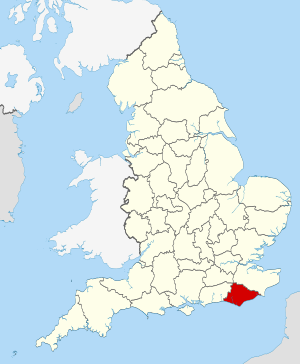 |
1. East Sussex |
|
| 2. Brighton & Hove (unitary) | |||
| West Sussex | 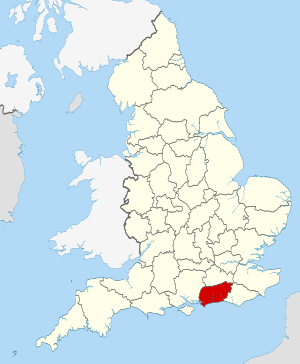 |
3. West Sussex | |
Sussex Economy
Even though Sussex is in a rich part of England, some areas have lower economic output than the UK average. There are also areas with significant poverty.
To help the economy, two groups called Local Enterprise Partnerships (LEPs) were formed in 2011. Tourism is a big part of Sussex's economy, with popular seaside resorts and the South Downs National Park. Brighton and Hove is known as "Silicon Beach" because of its many digital and media businesses.
Many large companies are based in Sussex, including American Express (Brighton) and Rolls-Royce Motor Cars (Goodwood). Gatwick Airport is also a major economic hub.
Historically, Sussex had an important Wealden iron industry and glass-making industry. Fishing fleets still operate along the coast, especially at Rye and Hastings.
Education in Sussex
The oldest university in Sussex is the University of Sussex, founded in 1961 in Brighton. It is known for its research. Later, the University of Brighton (1992) and the University of Chichester (2005) were also established.
The oldest known school in Sussex is The Prebendal School in Chichester, which dates back to the 11th century. Sussex also has many well-known independent schools, such as Brighton College and Lancing College.
Healthcare in Sussex
The first hospital in Sussex was the Sussex County Hospital (now the Royal Sussex County Hospital), founded in Brighton in 1828. Sussex's first medical school, the Brighton and Sussex Medical School, opened in 2002.
The Royal Sussex County Hospital is the main trauma center for Sussex, meaning it handles serious injuries. It also has the Sussex Cancer Centre, which serves most of the county.
Culture of Sussex
Sussex has a long history of being unique and different from the rest of England. People from Sussex are known for being independent, as shown by their motto, "We wunt be druv." Sussex is famous for its bonfire celebrations and its rich musical heritage.
The Brighton Festival and Brighton Fringe are England's largest arts festivals. Brighton Pride is one of the UK's biggest gay pride parades. Chichester is home to the Chichester Festival Theatre.
Buildings and Styles
Sussex buildings often use local materials like flint and sandstone. Sussex architecture can be quite unique, with buildings like the Saxon Church of St Mary the Blessed Virgin, Sompting and Brighton's Royal Pavilion, which has an Indian-inspired design.
Sussex Dialect
Historically, Sussex had its own special dialect. This dialect had different versions across the county. It's even said that the Sussex dialect has many words for mud!
Writers from Sussex
Many famous writers were born in Sussex, including playwright John Fletcher, who may have worked with Shakespeare. Poets like Percy Bysshe Shelley also came from Sussex.
Other famous writers who lived in Sussex include Rudyard Kipling, who spent much of his life here, and A. A. Milne, who set his Winnie-the-Pooh stories in Ashdown Forest. Four winners of the Nobel Prize in Literature have lived in Sussex.
Music in Sussex
Sussex has a rich musical history, from folk songs to classical and pop music. Sussex by the Sea is the county's unofficial anthem. Many traditional Sussex songs are very old, possibly dating back to the time of the South Saxons.
Famous classical composers like Edward Elgar and Ralph Vaughan Williams have lived in Sussex. Glyndebourne is a world-famous opera house in the county.
In pop music, Sussex has produced artists like Leo Sayer, The Cure, Keane, and Royal Blood. Sussex hosted the 1974 Eurovision Song Contest, which helped ABBA become famous.
Television Coverage
Sussex is covered by different TV news regions:
- BBC South East covers Brighton & Hove and East Sussex.
- BBC South covers most of West Sussex.
- ITV Meridian also covers the county.
Religion in Sussex
Christianity is the main religion in Sussex. About 57.8% of the population identified as Christian in the 2011 census. Other religions include Islam (1.4%) and Hinduism (0.7%). About 30.5% of people said they had no religion.
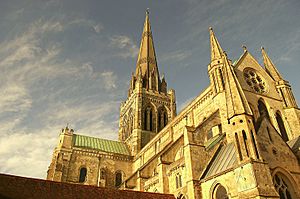
Sussex has been a single church area since the 8th century. Chichester Cathedral is the main church for Sussex. Arundel Cathedral is the seat of the Roman Catholic Bishops for Sussex and Surrey. St Richard of Chichester is the patron saint of Sussex.
There are also many different religious and belief groups around East Grinstead, including the Church of Scientology.
Science and Discovery
The 17th-century mathematician John Pell is known for Pell's equation. In the 19th century, Gideon Mantell started the scientific study of dinosaurs. He discovered the first fossil teeth of an Iguanodon.
In the 20th century, several Nobel Prize winners lived or worked in Sussex. These include Frederick Soddy (Chemistry), Frederick Gowland Hopkins (Medicine), and Harold Kroto (Chemistry).
Sussex was also involved in a famous archaeological hoax in the early 20th century, known as Piltdown Man. This was later found to be a fake.
Sports in Sussex
Sussex has a long history of sports. Cricket is believed to have started in the Weald area of Sussex. The first time cricket was recorded as being played by men (1611) and women (1677) was in Sussex. Sussex CCC, founded in 1839, is England's oldest county cricket club.
Sussex is represented in football by Brighton & Hove Albion in the Premier League and Crawley Town in the Football League. Sussex also has its own football association and league.
In horse racing, Sussex is home to Goodwood, Fontwell Park, and Brighton. The All England Jumping Course at Hickstead hosts major show jumping events.
Sussex Food and Drink
Sussex is known for its "seven good things": Pulborough eel, Selsey cockle, Chichester lobster, Rye herring, Arundel mullet, Amberley trout, and Bourne wheatear. Other traditional Sussex foods include Sussex Pond Pudding and banoffee pie, which was created in Jevington in 1972.
The county has many vineyards and a long history of brewing beer. Harveys of Lewes is an 18th-century brewery. Sussex also has many cider makers. In 2022, Sussex wine received special status, recognizing its quality. Many Sussex wines are made using the same methods as Champagne.
Art in Sussex
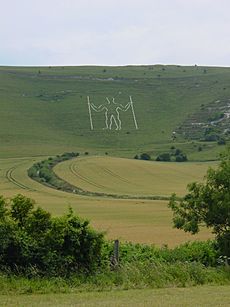
Some of the oldest art in Sussex is found in the ancient flint mines at Cissbury Ring. From the Roman period, Fishbourne Roman Palace has the largest collection of mosaics in the UK.
The 'Lewes Group' of wall paintings, dating from the 12th century, can be found in churches across Sussex. The Long Man of Wilmington is a giant human figure carved into a hillside, whose origin is still a mystery.
In the 19th century, artists like J. M. W. Turner painted the landscapes of Sussex. In the early 20th century, Sussex became a center for modern art and surrealism. Artists like Vanessa Bell and Duncan Grant lived and worked at Charleston Farmhouse.
See also
 In Spanish: Sussex para niños
In Spanish: Sussex para niños
Images for kids


